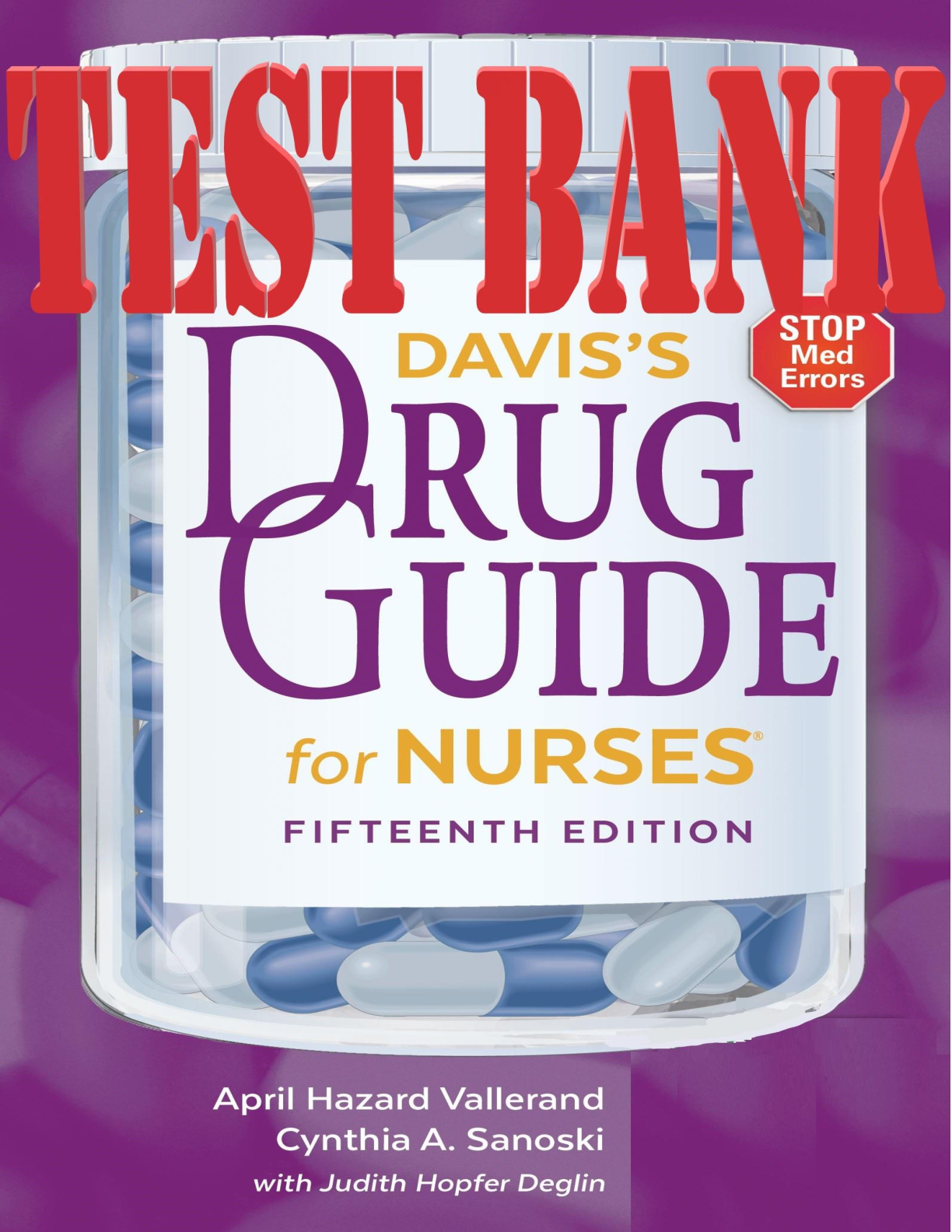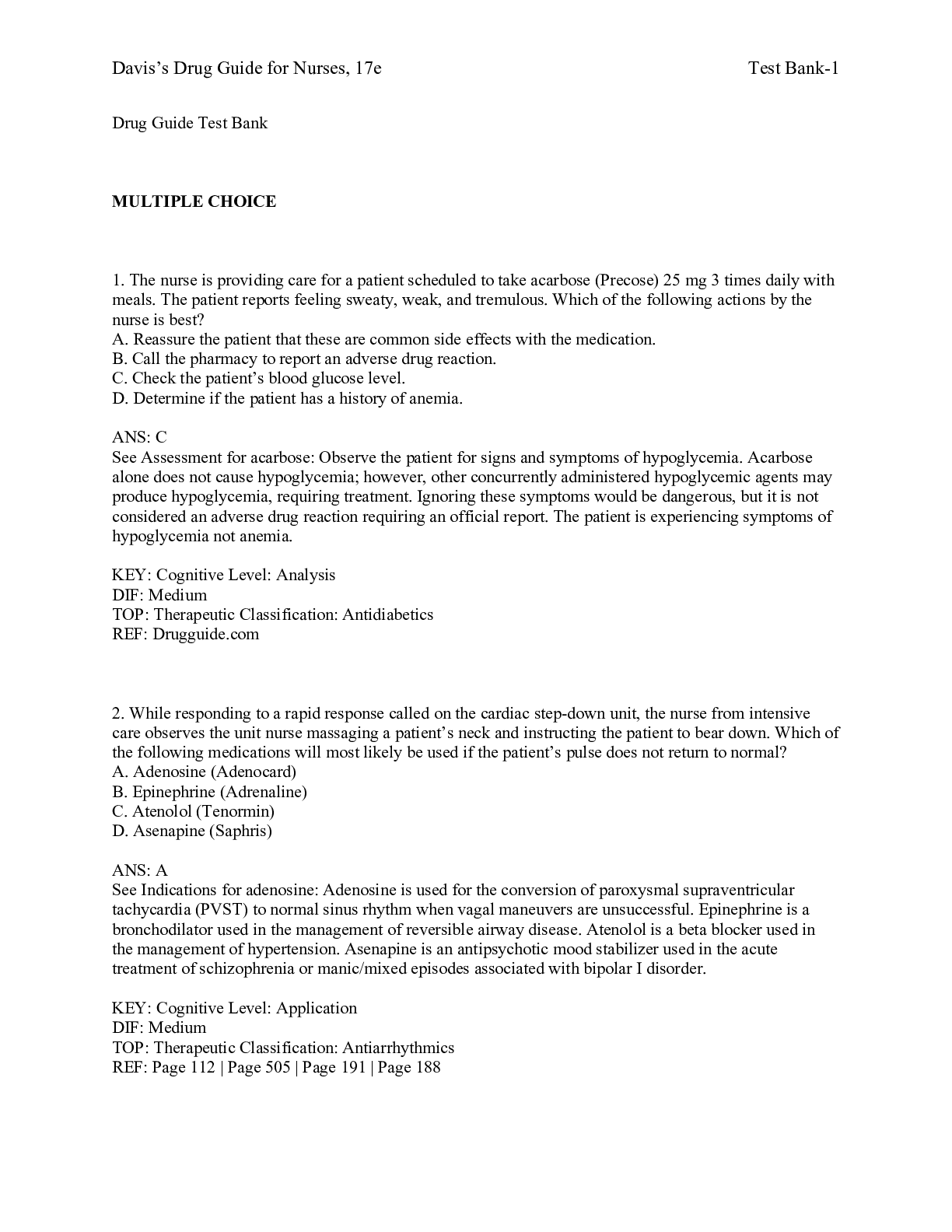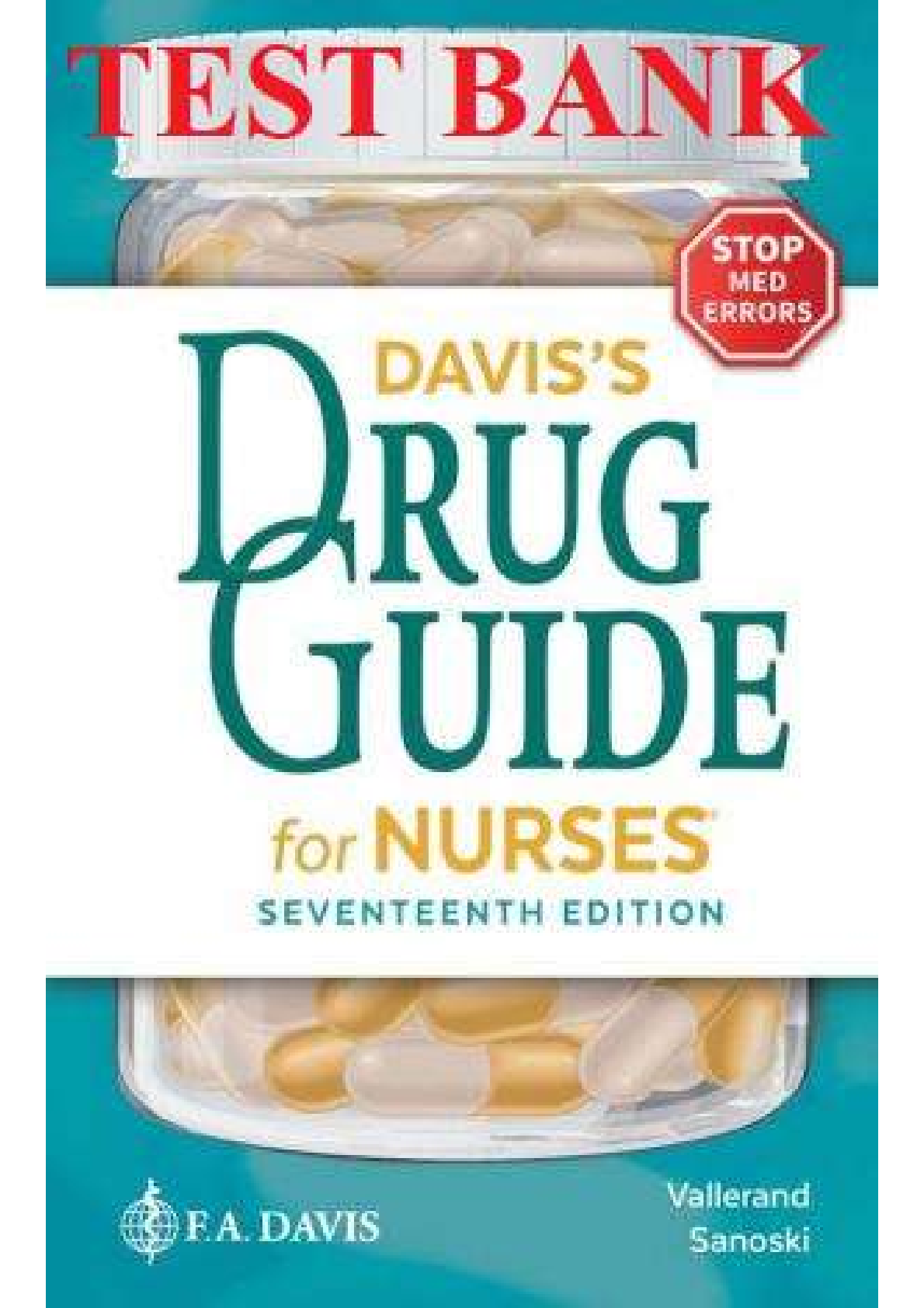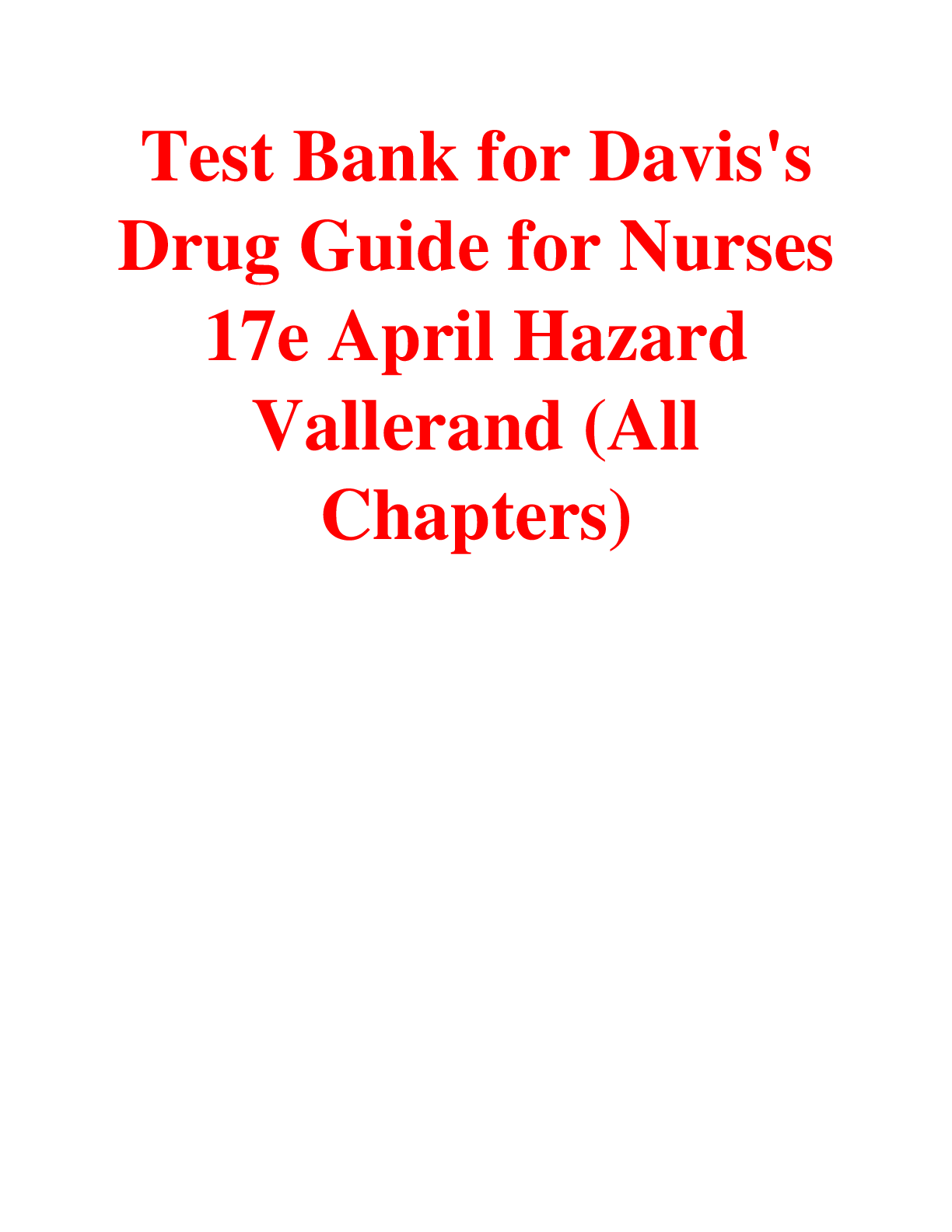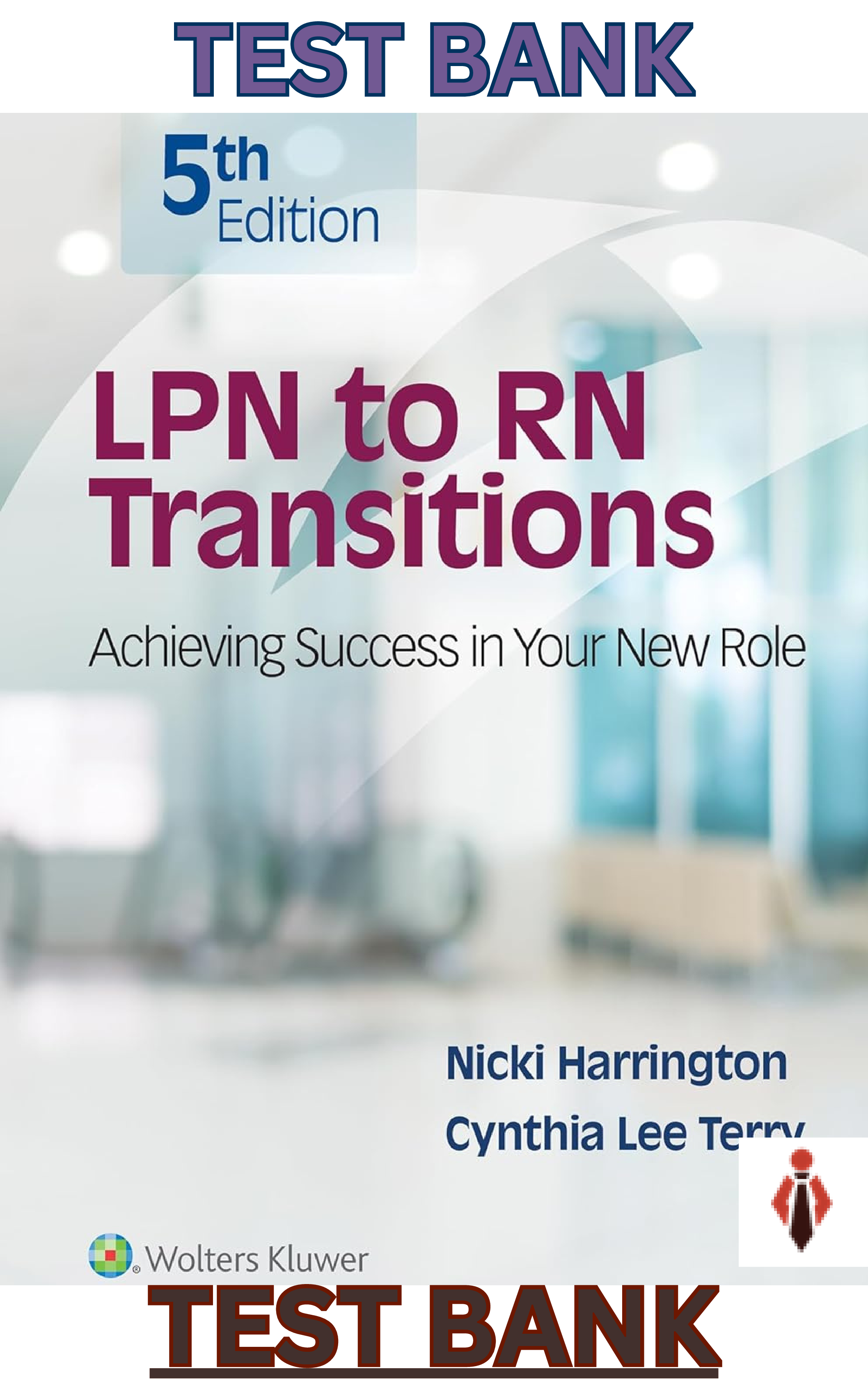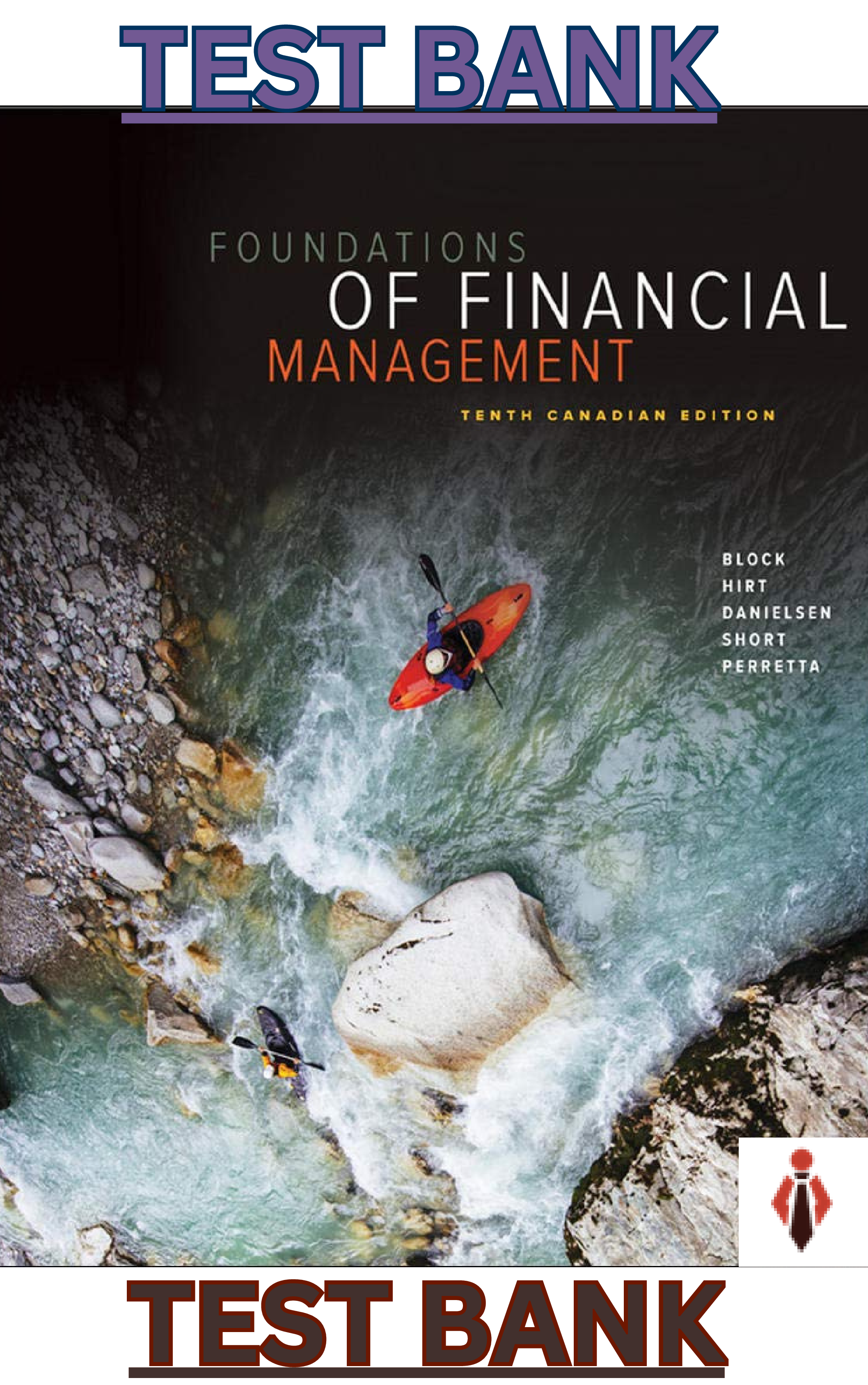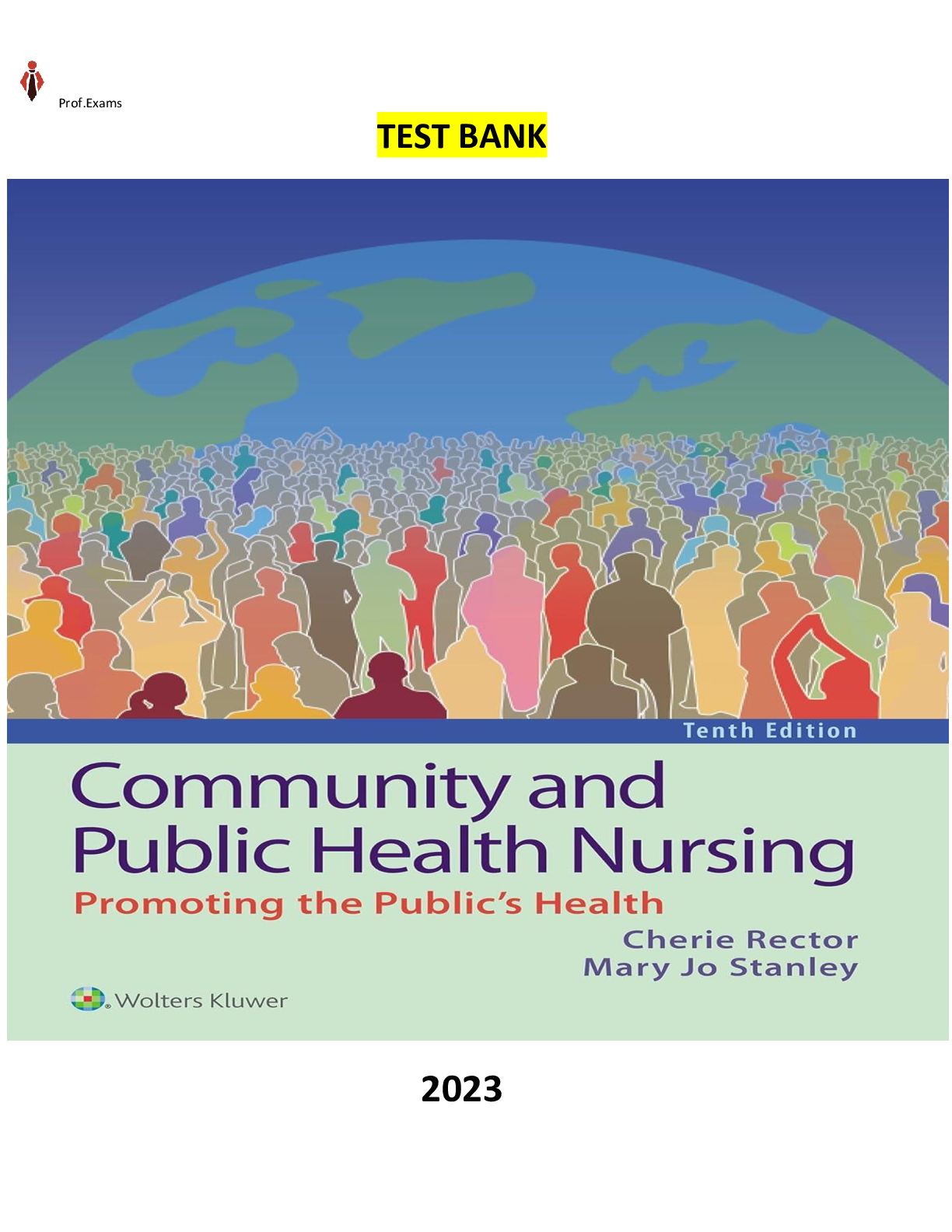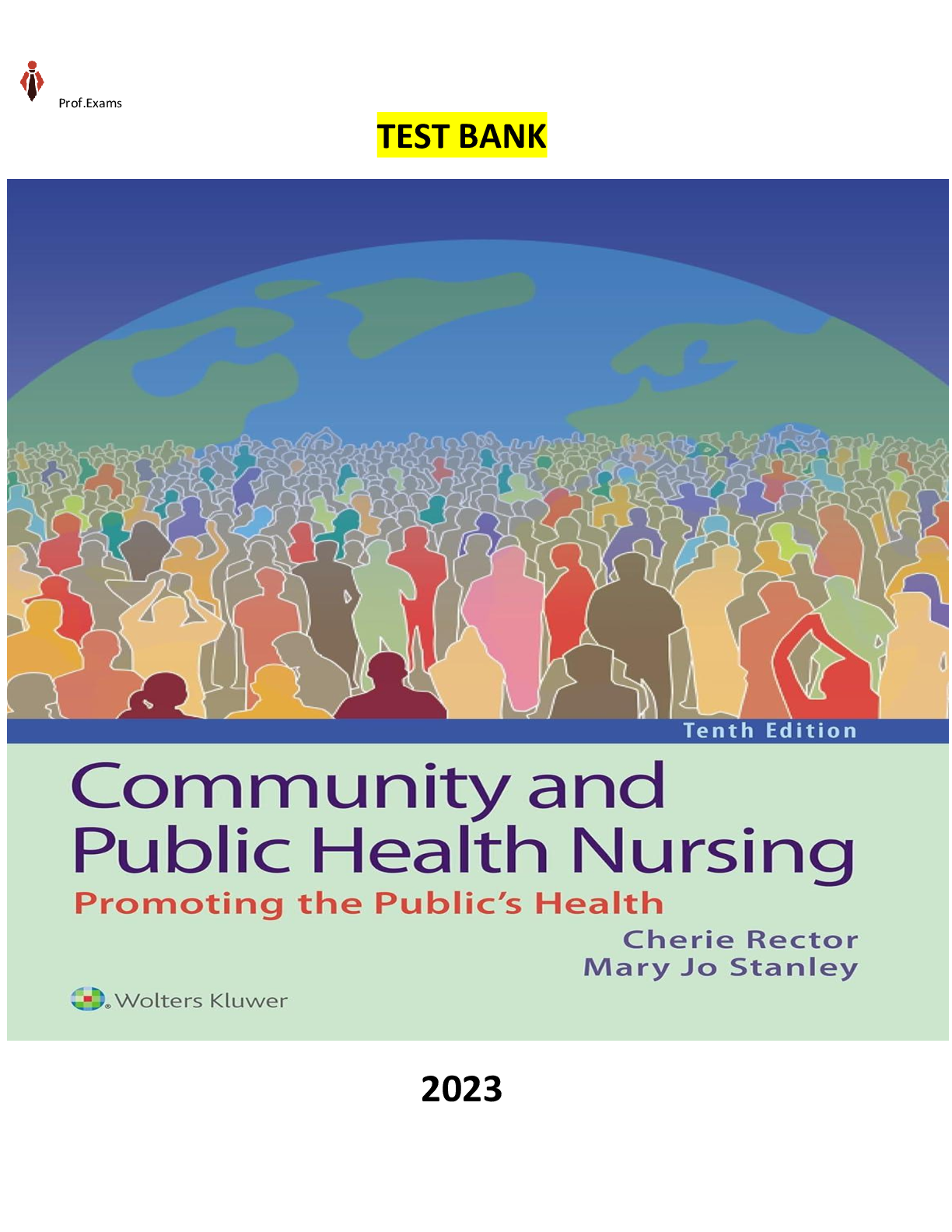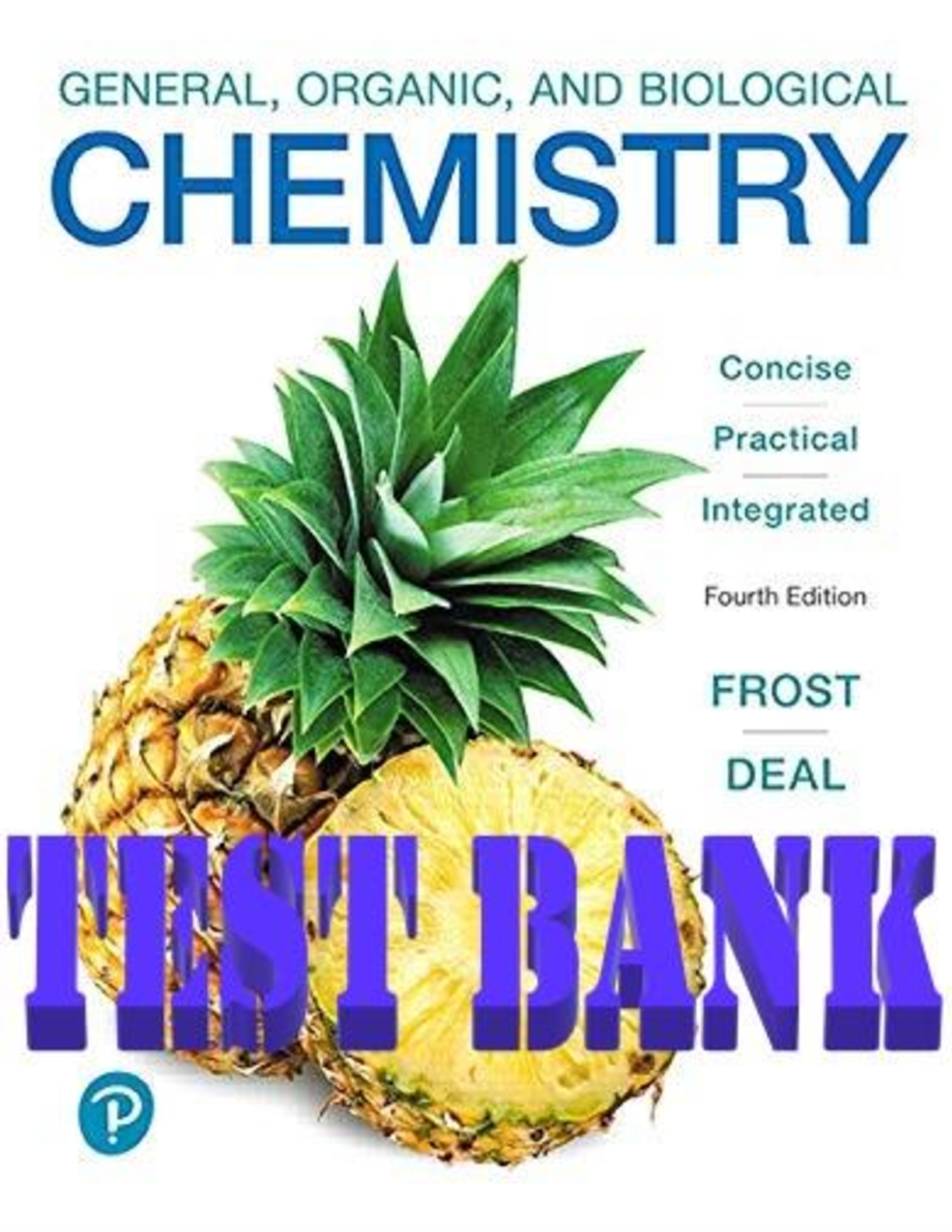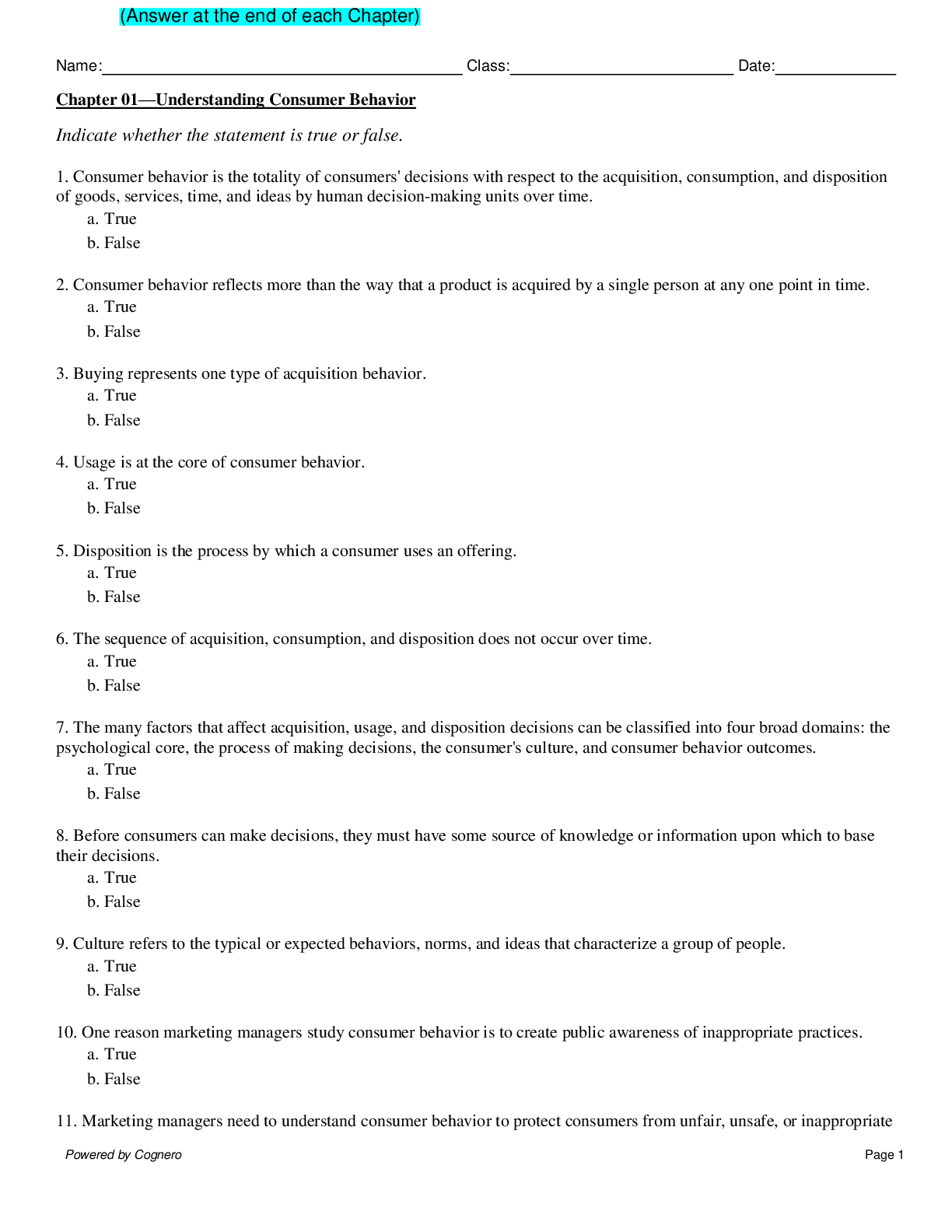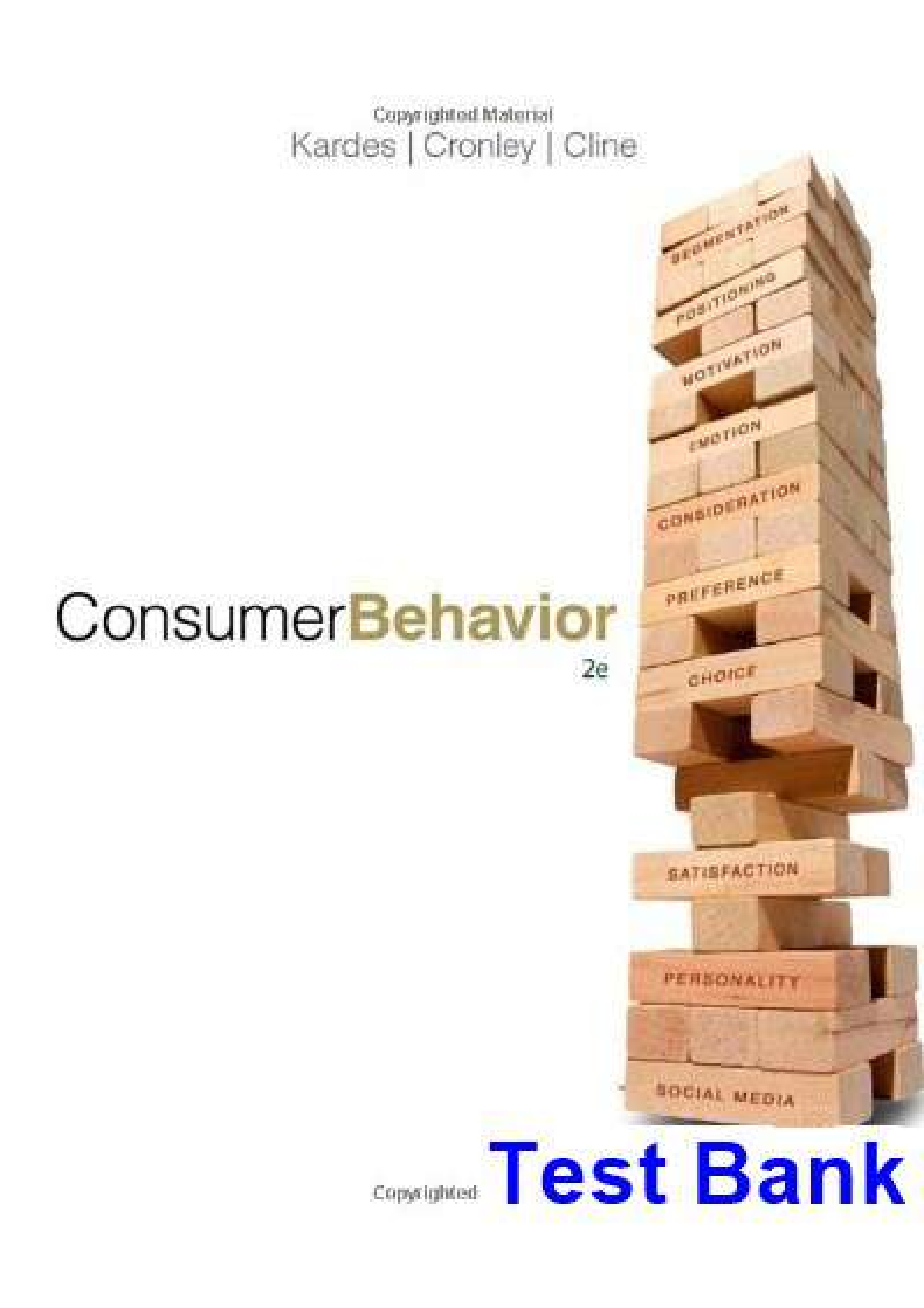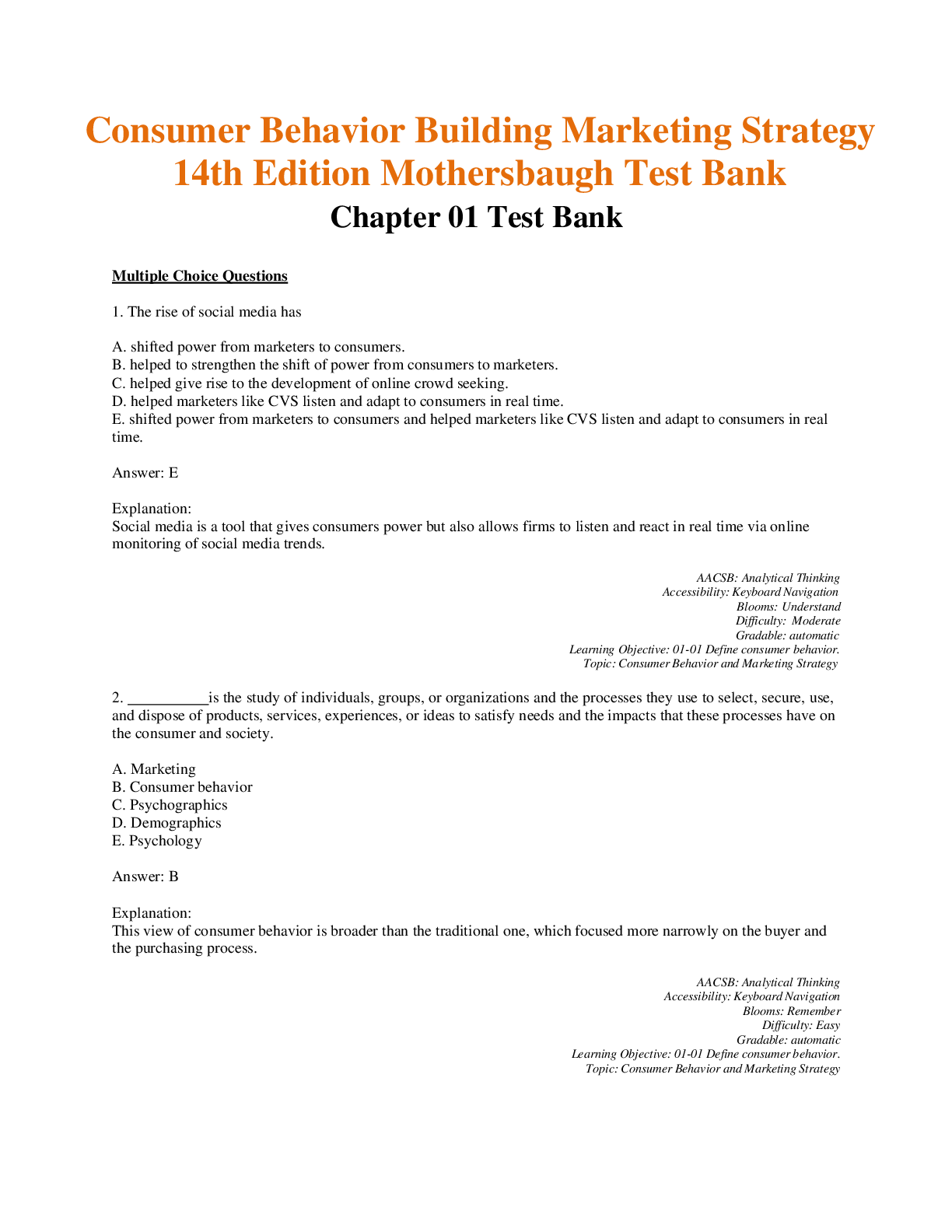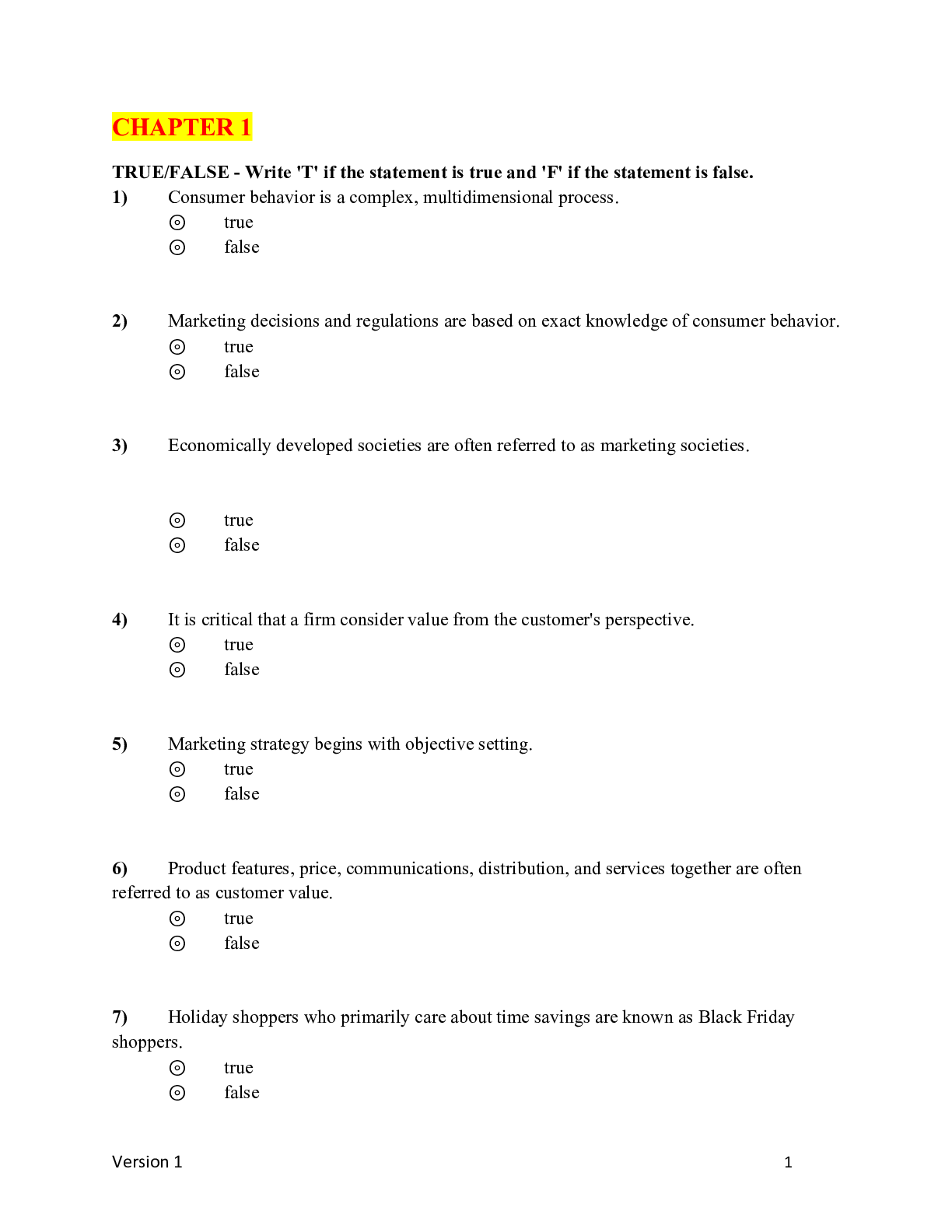Davis’S Drug Guide For Nurses 15th Edition – Test Bank
Document Content and Description Below
avis’S Drug Guide For Nurses 15th Edition – Test Bank Sample Questions Instant Download With Answers Davis’S Drug Guide For Nurses chapter 03 MULTIPLE CHOICE 1. The nurse is providing care... for an 82-year-old client with glaucoma. Diamox (acetazolamide) 250 mg orally twice daily has been ordered as a new medication. The nurse would be most concerned by which of the following? A. The client has a listed allergy to sulfonamides. B. The client has a history of rheumatoid arthritis. C. The client takes Cogentin (benztropine) daily. D. The client’s potassium is 3.6 mEq/dL. ANS: A See Contraindications/Precautions for acetazolamide. Hypersensitivity or cross-sensitivity with sulfonamides may occur. KEY: Cognitive Level: Application DIF: Medium TOP: Therapeutic Classification: Anticonvulsants, Antiglaucoma agents REF: Drugguide.com2. A 21-year-old client is brought to the emergency room with suspected overdose with Tylenol (acetaminophen). Which of the following medications would the nurse expect to be ordered? A. Protamine sulfate B. Primaxin (imipenem) C. Acetadote (acetylcysteine) D. Diabeta (glyburide) ANS: C See Toxicity and overdose for acetaminophen and Indications for acetylcysteine: Acetylcysteine is the antidote for the management of potentially hepatotoxic overdose of acetaminophen. KEY: Cognitive Level: Application DIF: Medium TOP: Therapeutic Classification: Antidotes, mucolytic REF: Pages 102 and 104 3. The nurse is providing care for a 64-year-old client on the telemetry unit whose heart rate suddenly jumps to 144 bpm. Telemetry shows supraventricular tachycardia and the client reports feeling a bit lightheaded and dizzy. The nurse attempts vagal stimulation without success and prepares to administer Adenocard (adenosine) 6 mg IV push. The nurse would expect which of the following to occur? A. A gradual slowing of the heart rate over the next 30 min with an end result of normal sinus rhythm and improved symptoms. B. Slowing of the tachycardia with an end rate between 100–120 bpm and improved dizziness within 5 min. C. Loss of consciousness for the client in preparation for electric shock/cardioversion. 4. A short period of heart block or asystole immediately after injection followed by conversion to normal sinus rhythm.ANS: D See Nursing Implications adenosine: Monitor heart rate frequently (every 15–30 sec) and ECG continuously during therapy. Short transient periods of 1st, 2nd, or 3rd degree heart block or asystole may occur following injection; usually resolves quickly due to short duration of adenosine. Once conversion to normal sinus rhythm is achieved, transient arrhythmias may occur but generally last a few seconds. KEY: Cognitive Level: Application DIF: Hard TOP: Therapeutic Classification: Antiarrythmics REF: Page 113 4. The nurse is caring for a 34-year-old patient with a large hilar mass due to lymphoma. Chemotherapy is being provided and the client also has orders for Zyloprim (allopurinol) 300 mg orally twice daily. When providing this medication, the nurse would include which of the following statements in the client teaching? A. “This medication will help prevent gout, which occurs when clients are given radiation therapy.” B. “Allopurinol binds to the uric acid being released by the destroyed cancer cells and prevents it from damaging your kidneys.” C. “Chemotherapy agents can reduce the number of white blood cells, red blood cells, and platelets in your body; this medication helps protect those cells.” D. “This is part of the chemotherapy regimen since some chemo agents are given in your IV and others are given by mouth.” ANS: B See Indications for allopurinol: Treatment of secondary hyperuricemia, which may occur during treatment of tumors or leukemias. KEY: Cognitive Level: Analysis DIF: Hard TOP: Therapeutic Classification: Antigout, antihyperuremicsREF: Page 125 5. The nurse is providing Ethyol (amifostine) to a 51-year-old woman with ovarian cancer who is also receiving Cisplatin. Which of the following nursing assessments during the infusion is of the highest priority? A. Monitor client blood sugar every hr. B. Monitor client’s respiratory rate every 30 min. C. Monitor client’s blood pressure every 5 min. D. Monitor client’s urine output every 4 hr. ANS: C See Nursing Implications Assessment for amifostine. Monitor BP before and every 5 min during infusion. Discontinue antihypertensives 24 hr prior to the treatment. If significant hypotension requiring interruption of therapy occurs, place client in Trendelenburg position and administer an infusion of 0.9% NaCl using separate IV line. KEY: Cognitive Level: Analysis DIF: Hard TOP: Therapeutic Classification: Cytoprotective agents REF: Page 133 6. While preparing to give Fungizone (amphotericin B) to a client who is also receiving Dexasone (dexamethasone), the nurse recognizes the client is at increased risk for which of the following? A. Hypoglycemia B. Hyponatremia C. Hypocalcemia D. HypokalemiaANS: D See Interactions for amphotericin B with corticosteroids. Concurrent use with corticosteroids increases risk of hypokalemia. KEY: Cognitive Level: Knowledge DIF: Hard TOP: Therapeutic Classification: Antifungals REF: Page 154 7. A client with breast cancer is taking Arimidex (anastrozole). The nurse recognizes that teaching has been effective by which of the following client statements? A. “If I miss a dose, I should take a double dose the next day.” B. “I must take this medication on an empty stomach before going to bed each night.” C. “Oral chemotherapy generally has fewer side effects and is much safer.” D. “There is a risk of allergic reaction for this medication so I need to notify the doctor right away if I have any swelling in my face, difficulty swallowing, or rashes.” ANS: D See Patient/Family Teaching for anastrozole. Inform client of potential for adverse reactions and advise client to notify health care professional immediately if allergic reactions or chest pain occurs. KEY: Cognitive Level: Analysis DIF: Easy TOP: Therapeutic Classification: Antineoplastics REF: Page 1638. A nurse is receiving shift-to-shift report for a client in the intensive care unit with multiple medical problems. The client is receiving Argatroban infusion. The nurse recognizes this medication is ordered to address which of the following health-care problems for the client? A. Ventilator-associated pneumonia B. Deep vein thrombosis C. Hypotension D. Urosepsis ANS: B See Indications for Argatroban. Prophylaxis or treatment of thrombosis in client with heparin-induced thrombocytopenia. KEY: Cognitive Level: Application DIF: Easy TOP: Therapeutic Classification: Anticoagulations REF: Page 182 [Show More]
Last updated: 11 months ago
Preview 1 out of 31 pages
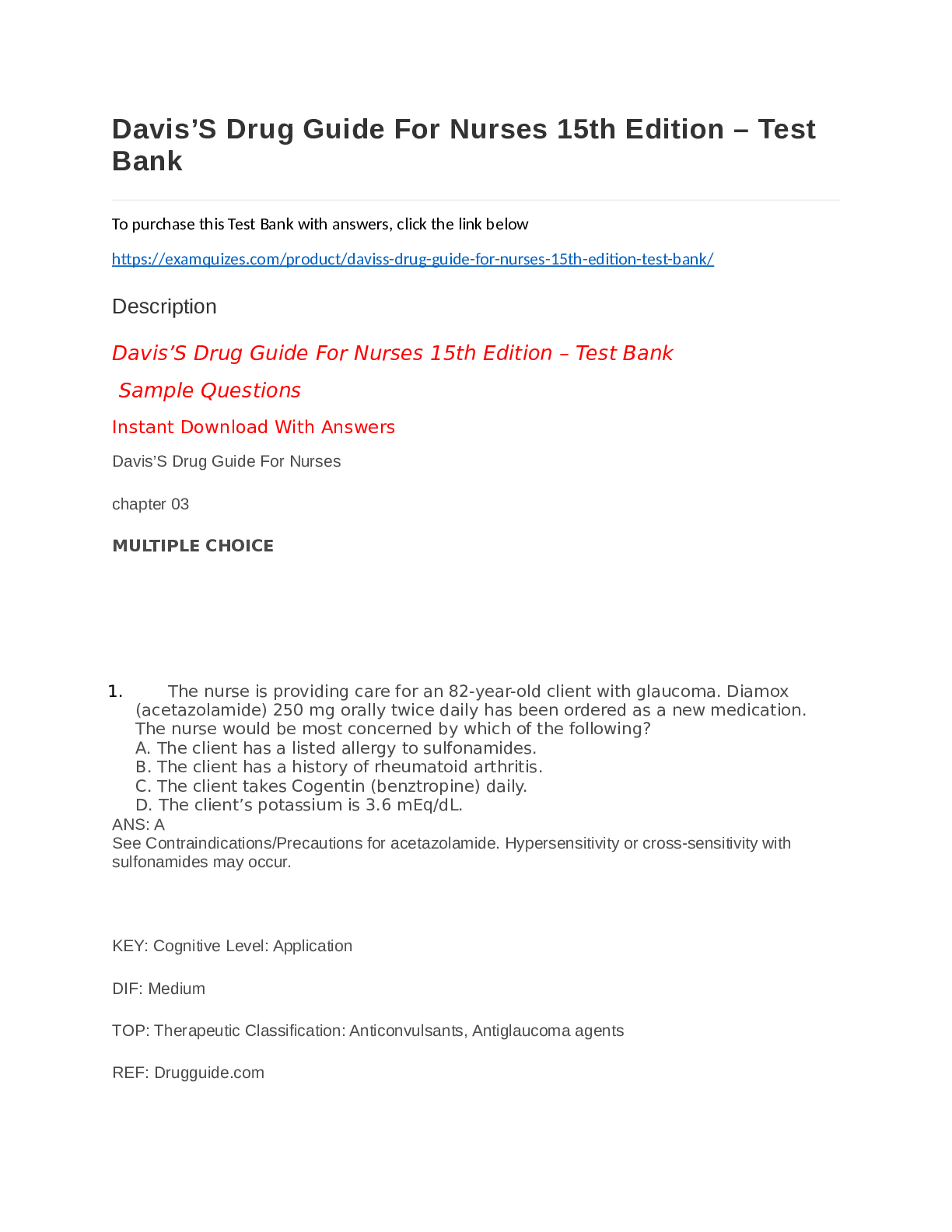
Reviews( 0 )
Document information
Connected school, study & course
About the document
Uploaded On
Jun 17, 2022
Number of pages
31
Written in
Additional information
This document has been written for:
Uploaded
Jun 17, 2022
Downloads
0
Views
66

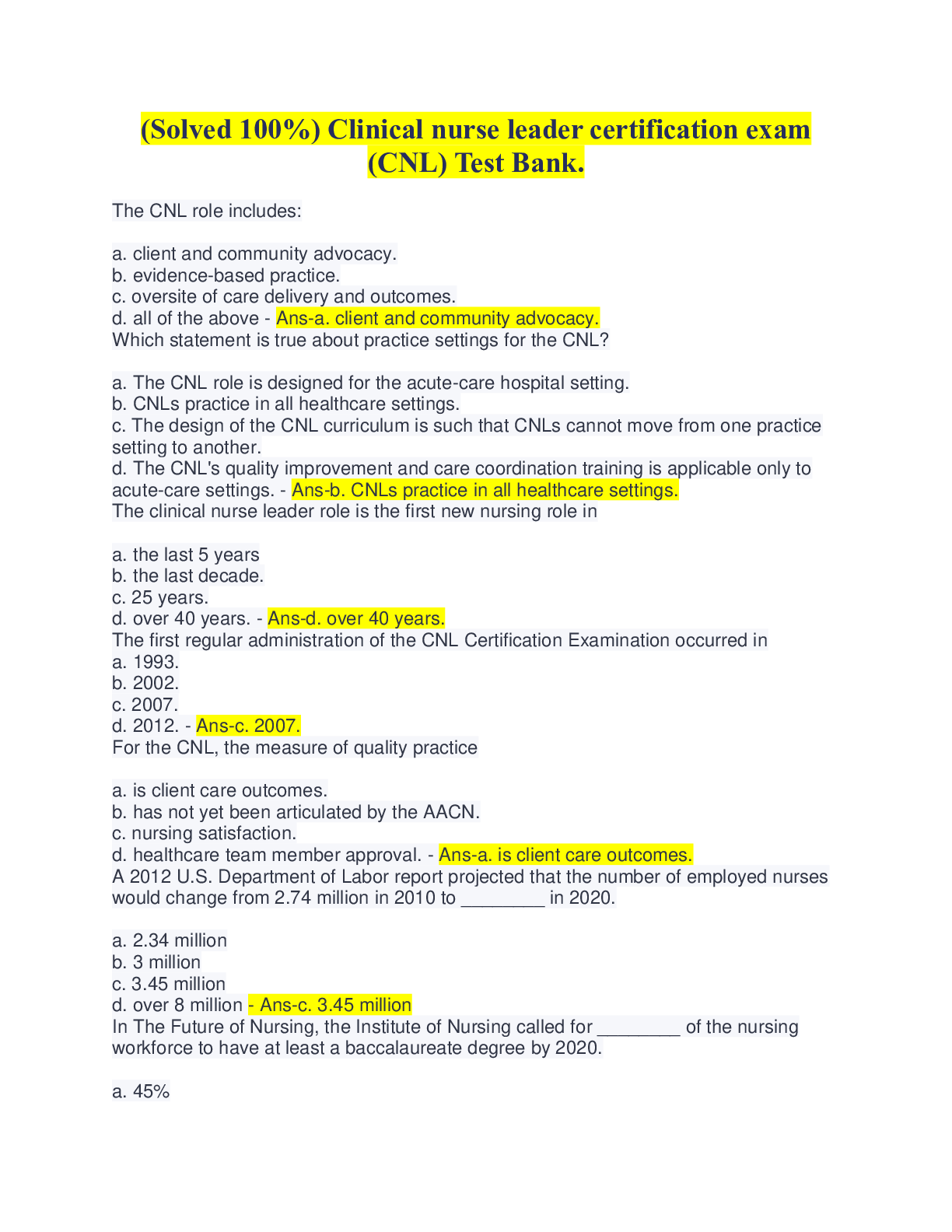










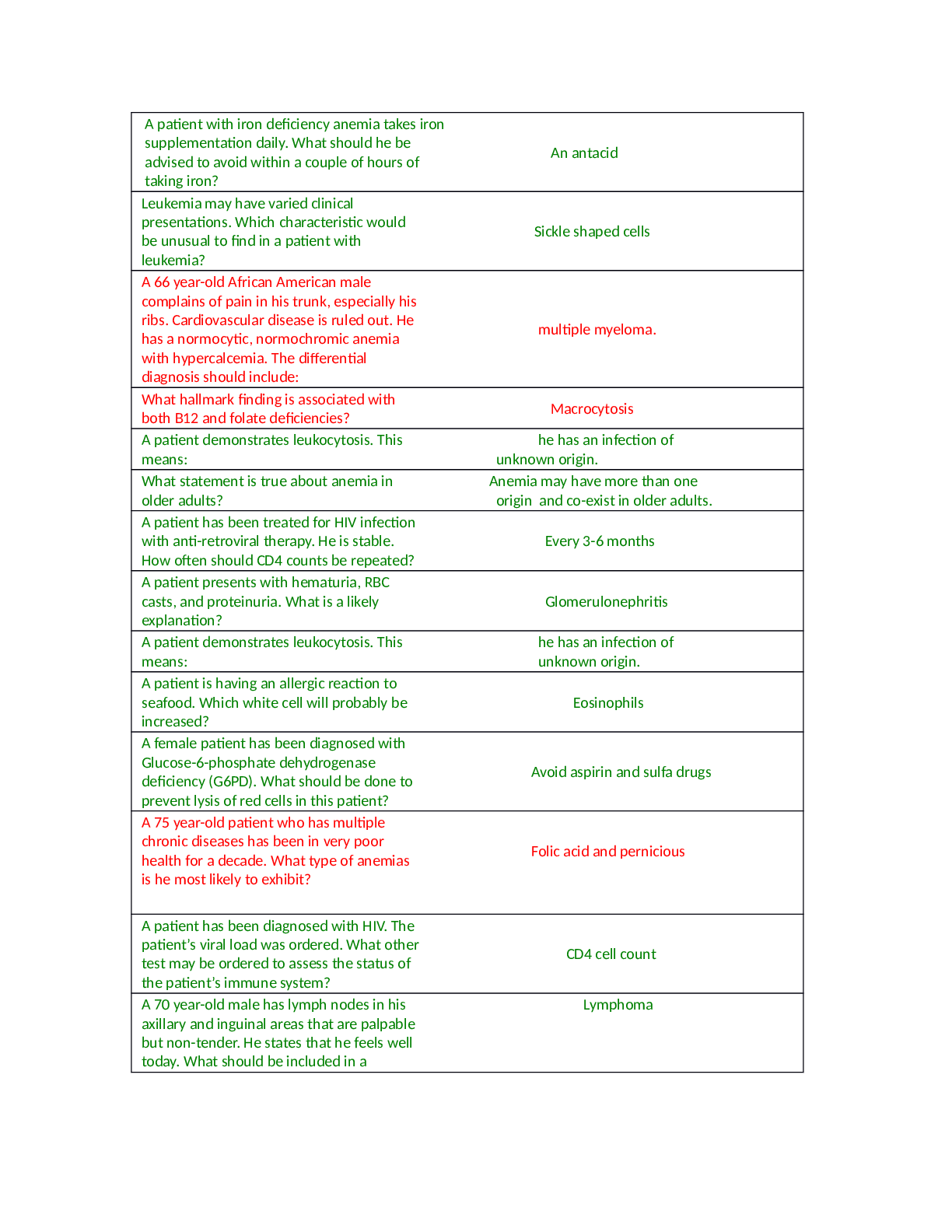

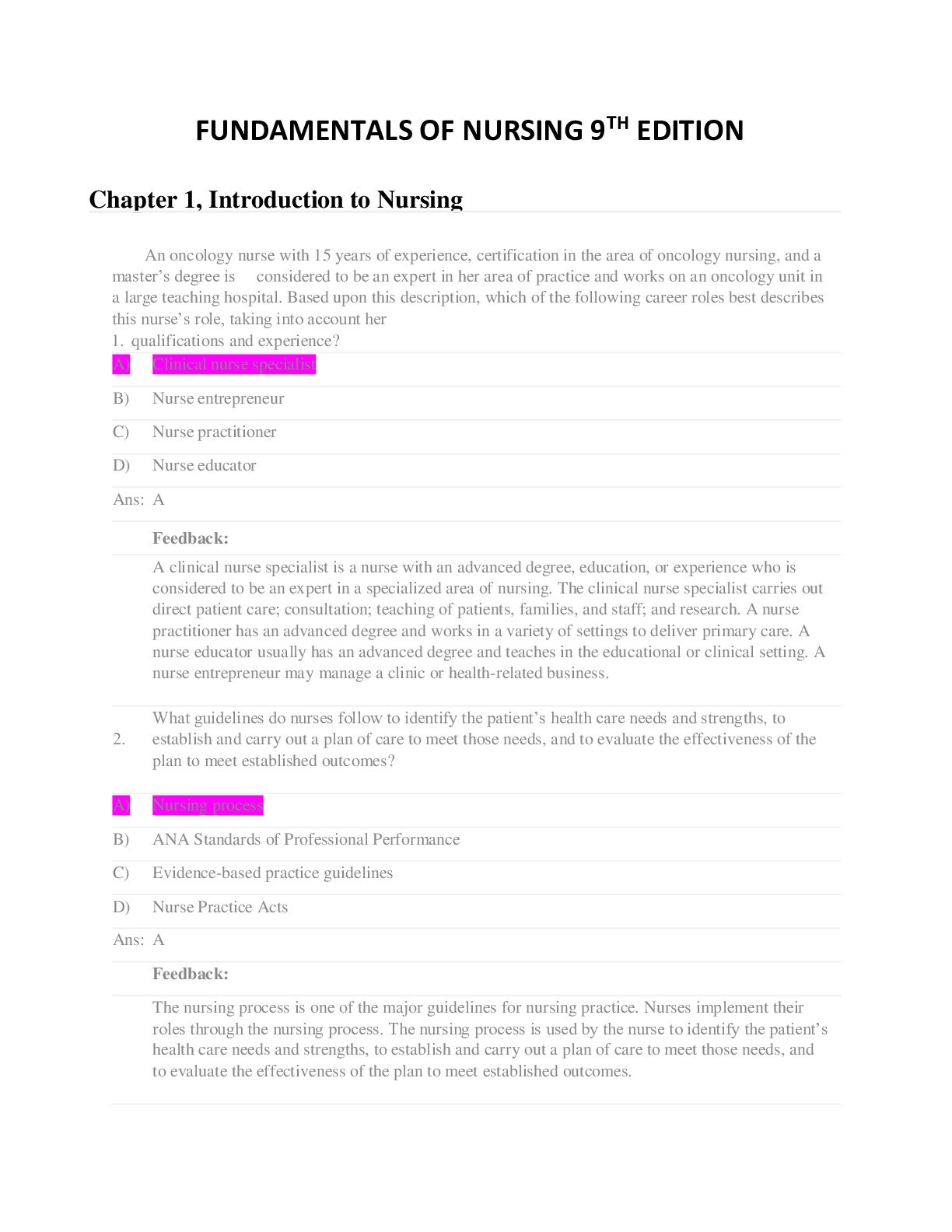

.png)
